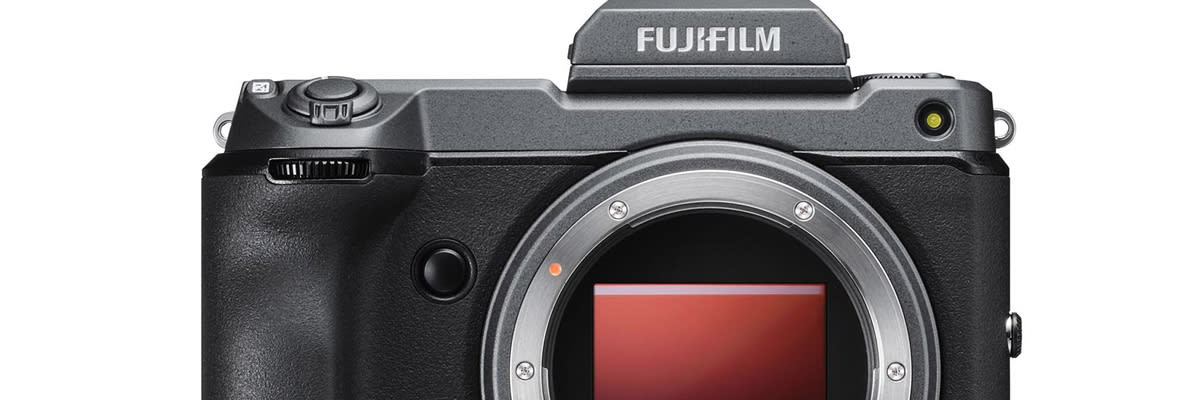
Return navigate_next
Fujifilm GFX 100S: One of the Best Medium Format Cameras
June 1, 2021 *
The world of pro-grade and “prosumer” camera technology continues to evolve at a rapid clip. Legacy formats like the DSLR continue improving, and newer players like medium and large format or mirrorless cameras do the same.
Of course, all this progress doesn’t come cheap, and high-end cameras are still decidedly high-end. To enter a certain performance tier, it’s not uncommon to drop $5000 or even $10,000 for a camera body. And that’s before you kit it out with all the right lenses and gear!
Fujifilm is a significant player, especially on the mirrorless side. Their older GFX 100 was and is a stellar camera, clocking in at an MSRP of $9999. But it’s also relatively large and bulky.
Fujifilm set out to create a smaller and less expensive spiritual successor to the GFX 100, and the GFX 100S is the result. While the company has of course stripped out a few bells and whistles to reach a $5999 price point, the GFX 100S actually improves on the original in other ways.
If you’re a photographer in the market for a camera in this price tier, here are some things you should know about the GFX 100S. And when you do make your purchase decision, don’t forget a camera extended warranty before you head out on your first shoot.

Fujifilm GFX 100S: Overview
The Fujifilm GFX 100S is a medium format mirrorless camera that brings an impressive combination of raw photography components and image processing. The image sensor produces images with a staggering 102MP resolution, matching the output of the GFX 100. And the hardware and processing capabilities combine for image stabilization that’s even better than the GFX 100, rated at up to 6EV.
There’s continuous shooting at up to 5 frames per second, and 4K video capture plus HDMI output.
Around back, you’ll find a high-quality touchscreen with two-axis tilt, plus a fixed OLED EVF (a necessary and still functional trade-off to achieve the smaller footprint).
The GFX 100S is equipped with dual UHS-II SD card slots, and the battery is rated for as many as 460 shots. The battery is much smaller than in the predecessor, meaning that you’re trading battery life for portability.
There are several attributes and features that make the Fujifilm GFX 100S a compelling choice, including these:
- Medium format image sensor produces huge, crisp images
- Mirrorless design
- Competitive size and price draw comparisons to DSLR style cameras
Medium Format
Medium format cameras contain an image sensor that’s larger and more sensitive than those in full frame cameras. As a result, the cameras themselves tend to be larger.
Medium format cameras can produce truly stellar images, but they can be prohibitively expensive. They have long been popular in commercial advertising (both in film and digital formats), and there can be a learning curve if you’re accustomed to another format.

Size and Price
The combination of size and price means that many pros use medium format in the studio but not outside of it. But with the GFX 100S, Fujifilm has managed to cram a medium format camera into a footprint much closer to a standard DSLR.
Between the size and the price, the GFX 100S becomes a serious contender for your next everyday camera, one that works on the go just as well as in the studio.
Mirrorless
Chances are, if you’re considering dropping $6,000 on a camera, you already have strong opinions on mirrorless tech. Mirrorless cameras tend to be smaller and lighter than DSLRs thanks to, well, the lack of mirror. And they rely on an electronic viewfinder as opposed to an optical one for the same reason. But overall, the mechanism is less complicated — and that’s a good thing.
Mirrorless autofocus is heavily processor-dependent and as a result can often be more sluggish than what you’ll get in a DSLR. But Fujifilm has invested the effort needed to get this right. Generally, the autofocus experience is snappy and efficient here, though one reviewer notes that pictures with multiple faces can take a bit longer.
Film Simulation
Far more than glorified filters, Fujifilm’s Film Simulation is a proprietary way of processing images directly in camera, mimicking the look of film photography with seriously impressive results.

Final Thoughts
For still photography and even static filming, the Fujifilm GFX 100S is a pint-sized powerhouse. It isn’t designed for rough-and-tumble video shooting, but the still image stabilization is truly superb. For the right photographer with the right budget, this camera is a fantastic choice.
A Camera This Good Is Worth Protecting
If you’re spending this kind of money on a camera, protecting it is essential. You need an extended warranty plan that’s as robust as your camera. And that’s what you get with Upsie: high-quality, honest coverage (including accident protection) that doesn’t mess around. And Upsie’s extended camera warranties and extended lens warranties are much cheaper than you’ll find at retail stores.
Protect your camera and lenses today with Upsie.
Learn More About Camera Insurance:
* This article is over 6 months old and may or may not be updated.
